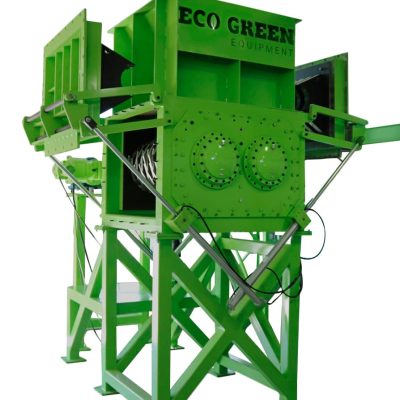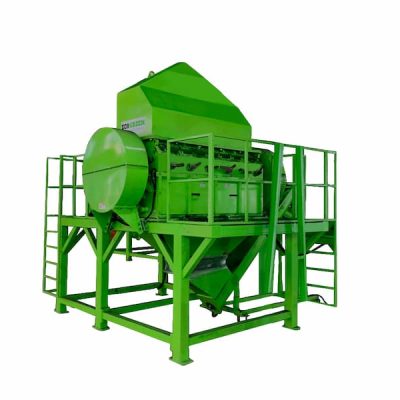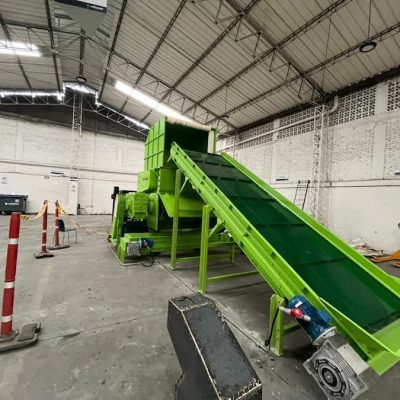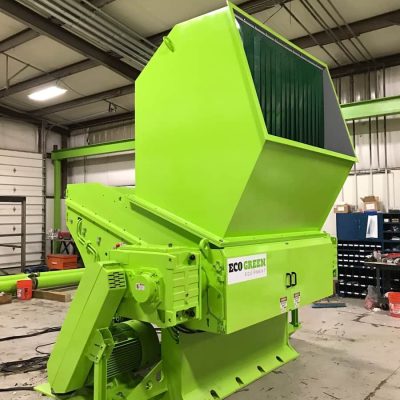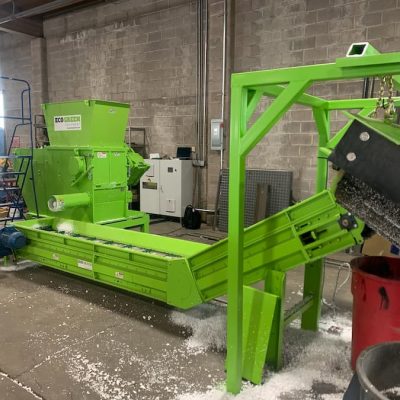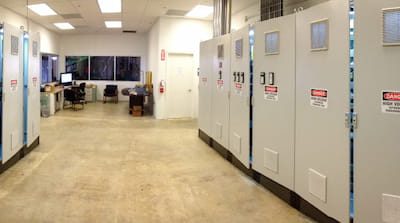Wood
Recycling Equipment
Wood is one of the most used and wasted natural resources. Its versatility, abundance, and machinability make it an ideal material for many products, including shipping containers and pallets, residential and commercial construction projects, manufacturing household products, landscaping, and other industrial uses. Unfortunately, a significant percentage of this wood ends up in landfills. At ECO Green, we believe that wood recycling is a better alternative to throwing away this useful resource.
Why Recycle Wood?
Limited Resource
The wood we remove from our forests is a limited resource. It takes time to replenish, which is why we at ECO Green believe our wood recycling equipment holds the key to helping the world reduce, reuse, and recycle wood products.
Cost-effective
Harvesting, processing, and transporting virgin wood from forests around the world is an arduous process. In addition to consuming our limited forest resources, it uses additional fossil fuel resources at every step. Ultimately, it is more energy-efficient to recycle the wood we already have than to harvest new wood.
Environmentally-friendly
Trees are our ally in the fight against climate change. They remove greenhouse gases like carbon dioxide that contribute to global warming from the air and give us clean oxygen in return. Forests also provide shade, reducing evaporation and decreasing temperatures below their canopy.
Useful
While you can’t recycle old wood into the new wood it once was, there are a variety of end products produced at recycling facilities, including biomass fuel and panelboard. The demand for these products is growing, creating opportunities in wood recycling.
Is Wood Recycling a Good Business?
According to MarketWatch, the wood recycling market is expected to reach $15.4 billion worldwide by 2030 with a compound annual growth rate of 6.8% for the next six years (2024-2030). This predicted growth shows there is potential for recyclers to successfully establish and grow wood recycling businesses. What is driving the market?
- Inflation – The price of wood skyrocketed during the pandemic. While prices have come down somewhat, new wood is still expensive, leaving businesses and homeowners searching for alternative materials like recycled wood products for construction and home improvement projects.
- Sustainability – With record high temperatures in the northern and southern hemispheres and extreme weather events occurring more often, consumers are more aware of the impact businesses and products have on the environment. This sentiment creates pressure to create green products. Recycled wood products fit the bill.
- Legislation – In an effort to curb global warming, countries around the world have adopted new laws to guide businesses and consumers to meet new environmental standards and goals. Wood recycling helps them comply with these regulations by reducing waste and resource consumption.
Can All Wood Be Recycled?
Not all wood is recyclable and reusable. Treated, painted, or stained wood is less useful in recycling. However, a large portion of discarded wood and wood products can be recycled using a wood shredder machine. The key is understanding which wood sources are useful in creating which end products.
Grade A
This top-grade wood is unaltered. Common sources of Grade A wood include pallets, crates, and other packaging materials. Once processed, this wood is in high demand. Wood recycling equipment can turn pallets into mulch for landscaping, bedding for animals, panel board, or biomass fuel.
Grade B
A mixture of Grade A wood and other construction materials (such as door and window frames, doors, fence panels, tree debris, and floorboards), this type of material bears the name industrial feedstock. After processing with a wood grinder, this wood is fit for use in panel boarding.
Grade C
Fit mainly for use as biomass fuel, Grade C wood may contain a blend of Grade A and B woods combined with wood collected from other sources.
Grade D
This low-grade wood includes all wood products that have been treated, painted, or stained. Because of the chemicals present in the wood, it is considered a biohazard and is not recyclable.
How Is Wood Recycled?
The right recycling equipment can make short work of old wood, turning it into a reusable and profitable end product.
Breaking it Down
Wood arriving at a wood recycling facility comes in all shapes and sizes, from pallets and window frames to oversize crates and large cable drums. After sorting the wood by grade, large pieces of wood are cut down to size using hydraulic shears, compactors, or pallet crushers.
Reducing the Size
The resulting large pieces of wood take a trip through a grinder to break the wood down into finer pieces. Many wood recyclers use a pallet shredder for this step. The resulting wood material is a mixture of small wood chips, nails, screws, or other pre-existing hardware.
Magnetic Separation
From here, conveying equipment carries the material by a magnet which removes metal contaminants. Often, wood recyclers send this material to a nearby facility for recycling as well.
Final Processing
The desired end product will dictate the amount of processing necessary to meet client quality standards. Wood destined to become biomass fuel may require less shredding and screening than wood shreds for decorative mulch or animal bedding. These final processing steps may include screening to remove large wood chips for additional passes through a grinder such as a pallet grinder.
What Should I Look for When Choosing Equipment?
The wood recycling equipment in your recycling facility is a significant contributor to your productivity and the bottom line of your operation. Equipment that breaks down, produces subpar products, or requires constant maintenance can be a frustrating hassle. It can slow your productivity and quickly eat into your profits, as maintenance and repairs take up valuable processing time.
Run Time
We design our recycling equipment with reliability in mind. Downtime due to breakage, clogs, or even routine maintenance is time your plant is not operational. If you aren’t making a product, you aren’t making a profit. Longer run times start with durable parts with long wear times, which is a feature we endeavor to include in every piece of ECO Green equipment.
Features
Recycling equipment of the past got the job done. However, we believe in striving to do the job better. From our shredders and pallet chippers to our conveying equipment and control panels, we offer a variety of features you can use to create an effective and efficient wood recycling system. The innovation and technology that goes into each piece of recycling equipment we make supports our goal of providing state-of-the-art machinery that improves recycling processes and outcomes.
Cost-efficient
Your recycling equipment is a significant investment. Decide now to buy quality equipment. It will pay you dividends in return. ECO Green equipment with easy access to wearable parts helps minimize operating time lost to maintenance, causing fewer interruptions to your recycling line and saving you time and money.
Output
How much recycled wood can you produce? Only as much as your equipment can process. Don’t let one step in your recycling line bottleneck the process and hinder your ability to meet the growing demand for recycled products. We know that efficiency is at the top of your list when shopping for recycling equipment, beginning with your primary shredder. Engineered for efficiency, our shredders, conveyance, and screening equipment work together to keep recycling materials moving along the line without compromising quality.
How Can ECO Green Help?
If you want to take advantage of the growing market for recycled wood products, the team at ECO Green can help you find the right wood recycling equipment to get started. Since 2001, our time-tested recycling equipment has helped companies worldwide shred passenger, mining, and OTR tires. And, we are constantly seeking ways to improve our processes to enable recyclers to turn our waste into new products and minimize our environmental footprint.
Our culturally diverse team of recycling equipment experts provides excellent customer service to our clients all over the world. Let us help you choose the right recycling equipment to jumpstart your new recycling business venture.

